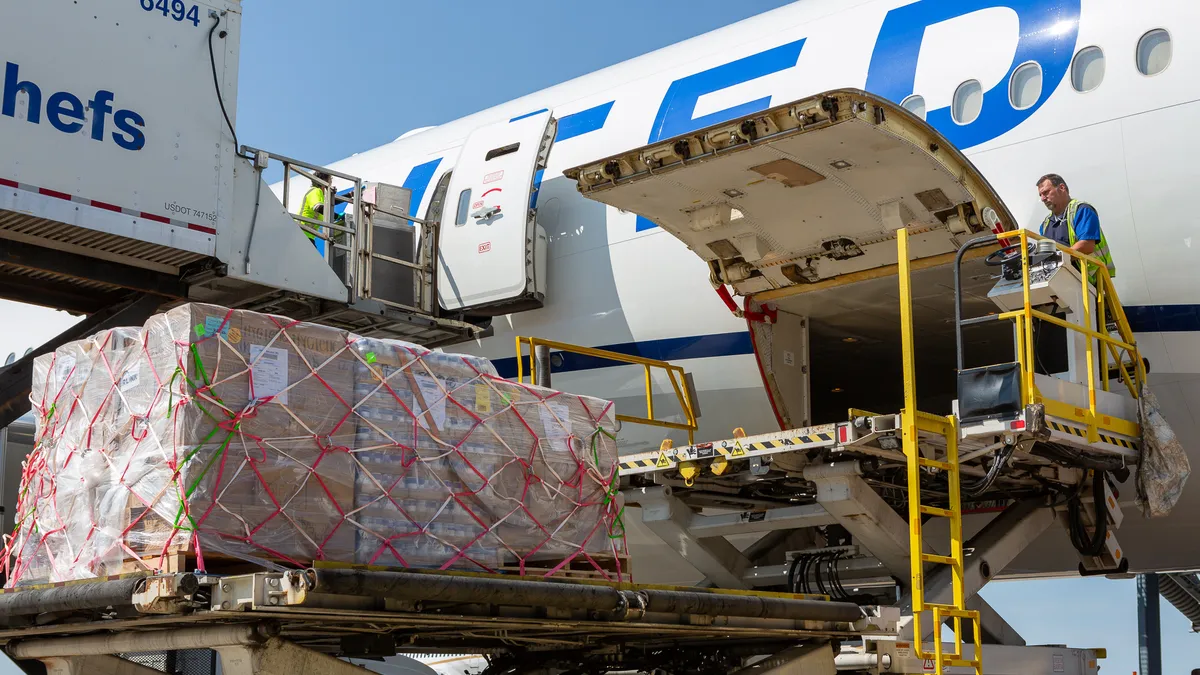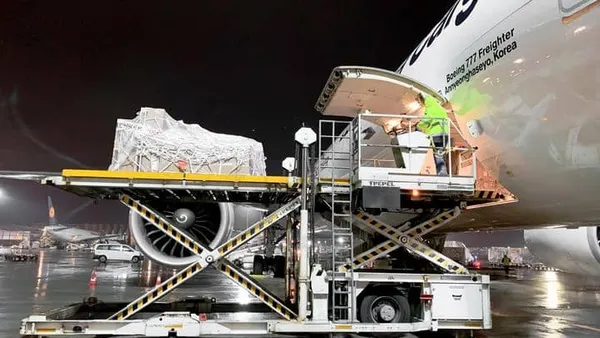Dive Brief:
- A boost in demand pushed the general air cargo spot rate up 6% month over month to $2.60 per kilogram — its highest level in nine months, according to a Jan. 3 emailed analysis from Xeneta’s Clive Data Services.
- While December was busier than anticipated, Christmas and New Year holidays make it an odd month, according to Niall van de Wouw, chief airfreight officer at Xeneta. “Our market outlook forecast for 2024 remains unchanged with an anticipated +1-2% growth in demand, and a +2-4% rise in supply,” he said.
- “To say 2024 is a ‘new dawn’ is perhaps a [little] too optimistic, but I certainly think it’s the start of a new cycle for airlines and forwarders — and shippers are likely to also appreciate the stability returning to the market so they can more accurately predict the [transportation] costs for the products they are selling,” van de Wouw said.
Dive Insight:
Unfortunately, industry optimism may be short-lived. Air cargo spot rates on the China to U.S. tradelane were the only lane among those referenced to see rates shoot above the same period in 2022, and it mostly peaked in early December. By the end of the month, spot rates on that corridor fell 20% YoY compared to its peak three weeks prior, Clive reported.
Meanwhile, annual global air cargo capacity growth of 6% was relatively steady compared to previous months.
Expectations of market normalization have been on the rise, with more shippers committing to longer-term, fixed rate contracts in Q4 2023. According to Clive, 45% of total contracts signed were for over-six-month contracts, up five percentage points from the prior quarter. Six-month contracts accounted for 28% of the total market. Back during the pandemic, shippers were managing rates that were valid for only one month.
“In contrast, air cargo seems to be in a more ‘steady state.’ It is important for airlines and forwarders to focus on the elements they can control, such as cost and reliability, and to be ready for when the opportunities arrive,” van de Wouw said.
Meanwhile, ocean shipping has been grappling with challenges due to disruptions on the Red Sea and through the Suez Canal, which has yet to influence air cargo rates, he added.
“There’s still a lot of friction in the global supply chain market and that means there will be opportunities for some sectors,” said van de Wouw. “If big ocean carriers are not going through the Red Sea, it might delay a million or more containers, with all the knock-on effects. And the fact that you don’t know how long this situation will continue means some shippers will pay for the predictability of air cargo to lessen the impact of the current ocean freight disruption.”
Although the overall supply chain outlook for 2024 remains murky due to heavy market uncertainty, the disruptions and challenges may be “good for airfreight’s share of global trade,” he added.














